These are the 10 guitarists you need to hear in 2020
On the lookout for jaw-dropping new talent? Here are 10 fresh guitarists to keep an ear out for in the coming year
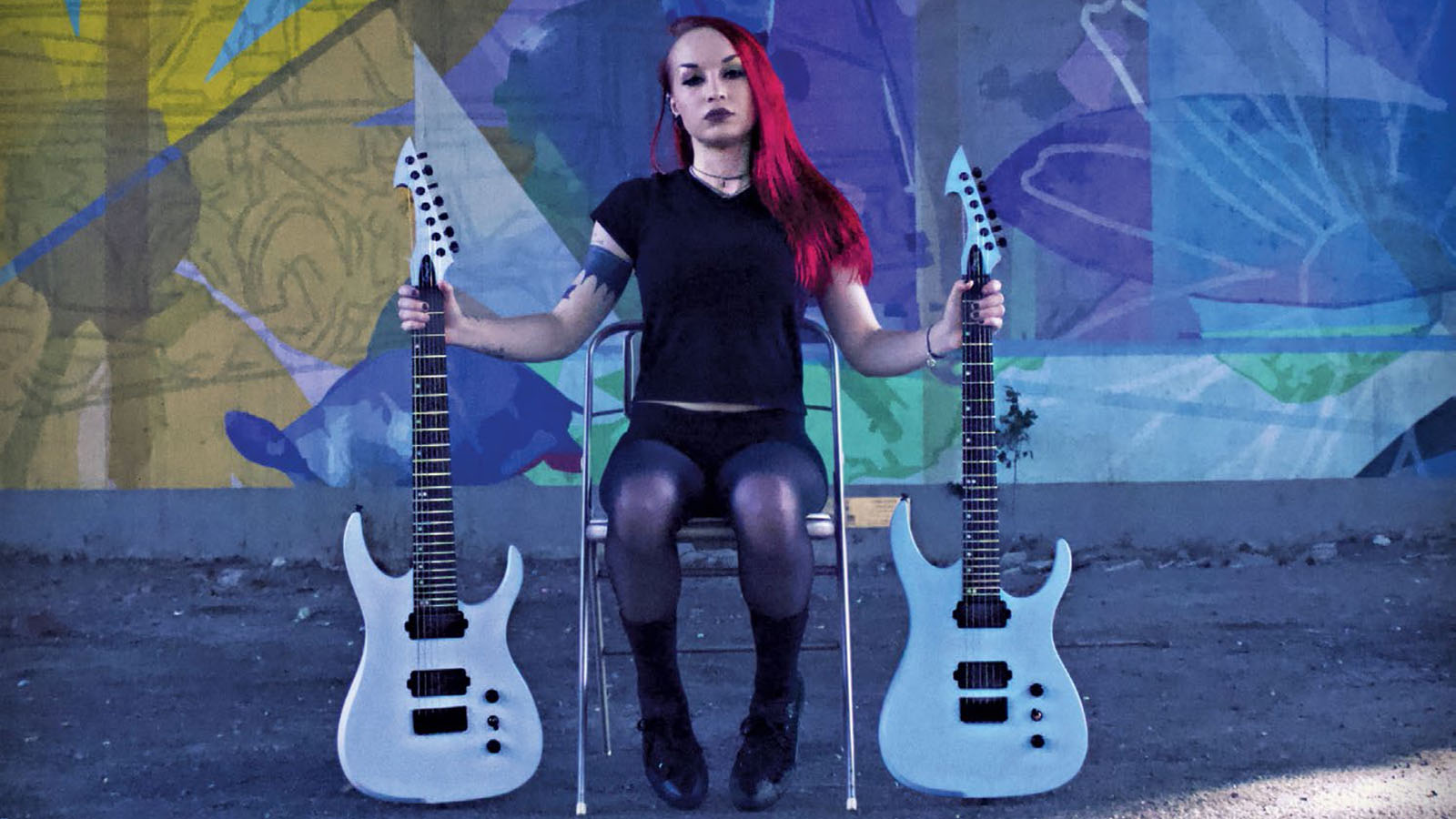
We all know the guitar is the greatest instrument in the world. It’s easy to pick up, difficult to master and perfectly suited to the development of individual styles.
Going far beyond mere note choice, our styles are made up of so many factors: how you hold the pick, your fretting-hand phrasing choices, your amp and effect settings, your rhythmic approach - and it all coalesces into that unique indefinable thing that makes you you as a guitarist.
The 10 guitarists here come from diverse backgrounds and different countries, but the one thing they all have in common is their uniqueness on the instrument. Meet the next generation of guitar iconoclasts.
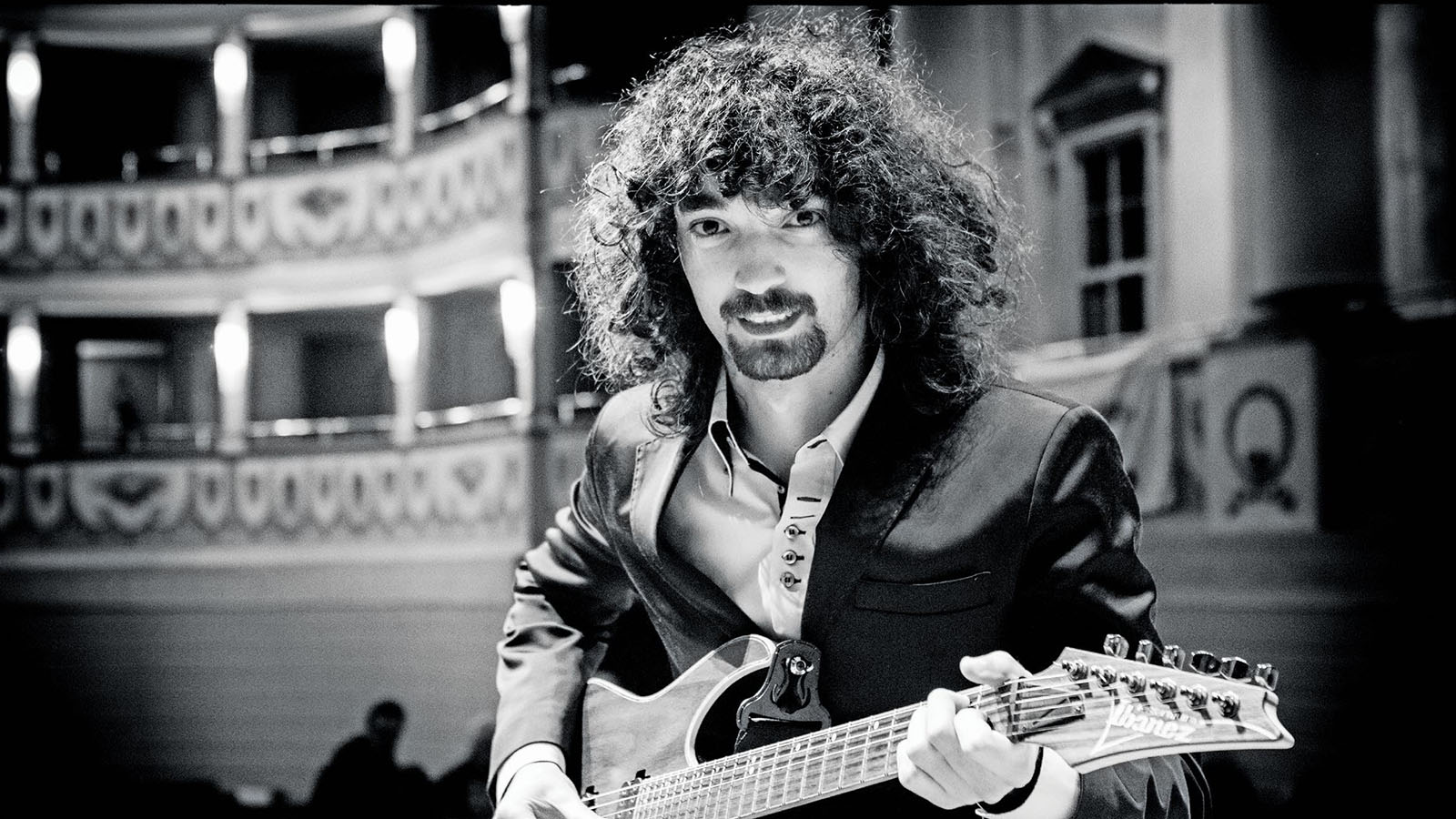
1. Vanny Tonon, Italy
How would you describe your style?
Sometimes I start from a melodic idea or a chord progression, so I’ll choose one or the other, then I try to focus more on the sound itself, because sometimes I don’t know what will happen! Sometimes I’ll start with the guitar with no effects, or from a specific sound, like an Eventide harmonizer or modulation. I see sound as color; I try to put my emotions and feelings into my music. If I’m in more of a dark metal mood, I might experiment with more creepy, horror sounds. It depends on the mood.
How did your style develop?
I saw my father playing when I was six and thought, “Oh my god, this is what I want to do.” I was super excited the first time I saw him play. He gave me my first lessons on an old acoustic guitar. I tried to do a few experiments with the chords, trying to find something coming from the wood, the tone of the guitar itself, not from an effect. I was excited about the 'real' sound of the acoustic guitar.
All the latest guitar news, interviews, lessons, reviews, deals and more, direct to your inbox!
What gear do you use to achieve your musical vision?
I’m an Eventide endorsee, so I’ve been using my H9 Max pedals and the Rose pedal to compose new songs for the second album, a mix of sound experiments, hybrid-picking and tapping ideas. I’ve already released a live version of one of these new experimental songs, The Jumper, where I’ve used only the H9s and played it solo. I like that I was able to compose the song using only guitar sounds, and I also have the ability to play it solo.
I’m now using Ibanez AZ guitars and Victory amps, and I use IK Multimedia synth and orchestral software - Syntronik and Miroslav Philharmonik - to compose. Choosing your gear and your software is incredibly important to find your own voice and sound on the instrument, and to keep you inspired during the composition process.
The Ibanez AZ is a new model, 24 frets and more of a Strat-ish guitar, very versatile. I also have a Fender Telecaster Thinline. I like the tone and the feel of the Tele. It’s not super-easy to play; the neck is very fat, but the sound is incredible. So I go between the two - the Tele for the riffs and clean tone and the Ibanez for the 24 frets and the whammy bar!
What’s next?
I’ve been experimenting with new sounds for my second album. I love the tapping technique for guitar, and one of the first songs I ever composed, The Fanatic Tourist of Love, was with this technique. I dedicated it to Jason Becker and he enjoyed it.
I’m trying to combine the effects and the technique, so I think about the instrument like a little orchestra. The new album will be recorded only with the guitar, no other instruments, so I wanted to compose songs I can play live - only with the guitar. It’s difficult to do that, to combine the technique and the effects to make the guitar sound like an orchestra.

2. Sarah Joanne, U.S.
How would you describe your style?
Very eclectic. I like experimenting with a wide range of clean and distorted sounds in every song. My band, Anchor Thought, put out our first EP this year, Cosmonaut, and it ranges from soft piano to metal to ambient, and I like that flexibility. I don’t write with expectations; whatever comes out, comes out, and if I like it, it will fit.
How did your style develop?
I’m constantly developing my style. I love taking one-on-one lessons from my favorite musicians and using what I learn in a new way. I play several instruments and I love incorporating techniques from different instruments into my guitar playing. I started learning music and playing piano when I was eight. Playing piano when I was young heavily influenced my playing when I picked up guitar later.
I learned to tap with two hands simultaneously on the fretboard and play notes similarly to how you would on a piano. Playing this way just clicks in my brain! After I learned guitar, I started playing bass. A couple of years into playing bass I started to learn the thumping technique and later incorporated that into my guitar playing. I developed my style by trying out as many different techniques as I could and finding what works best for me, then expanding on that.
What gear do you use to achieve your musical vision?
I love my gear. I’m excited to say I’m at a point where it couldn’t get much better. I play Ormsby guitars and use Fishman pickups exclusively. I play an Ormsby GTX 7 with Tosin Abasi’s signature Fishman Fluence pickups. I use D’Addario strings and Tsunami cables.
When I go out, I’m carrying my gear in Mono cases because they’re great for protecting everything, whether I’m just going to the studio or flying my guitars in a plane.
What’s next?
Our next EP will be out in 2020. I’d love to start touring once we get it released, so we’ll see what the future holds!
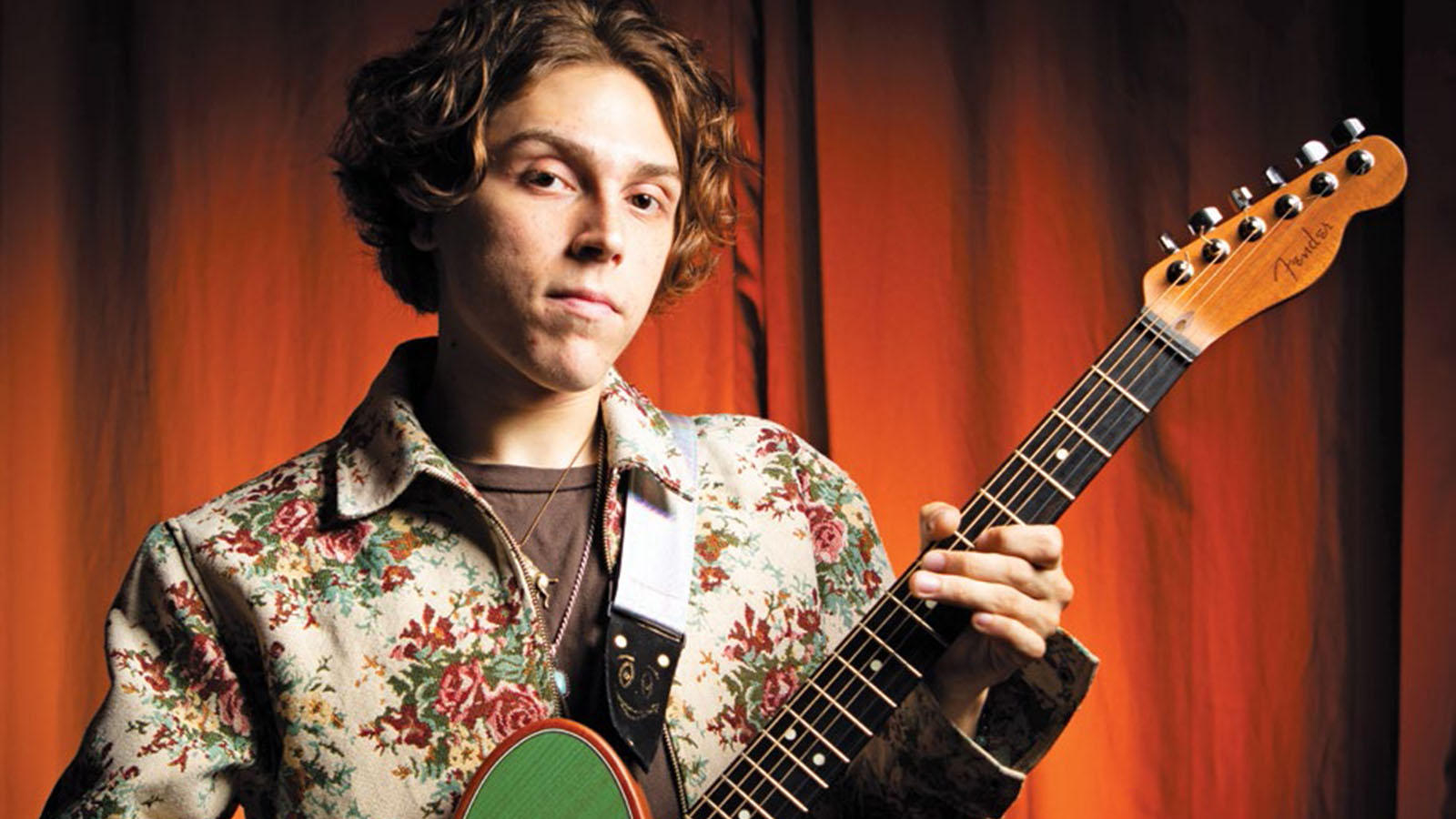
3. Daniel Donato, U.S.
How would you describe your style?
Definite in individuality with an intense passion for discipline of technical ability and an evergreen love for the passion we all feel when we first begin. That fuel of beginning contains so much of it. I want to always lay in a great medium between the tourist/purist dynamic.
Less philosophically speaking, my style is a combination of old-style country players like Jerry Reed, Chet Atkins and Brent Mason along with the intention of psychedelic-era players like Jimi Hendrix and Jerry Garcia. But I also was born in the Nineties, so John Mayer has equity of inspiration in nearly everything I pluck on the guitar.
How did your style develop?
By trying to dive into my brain and achieve the potential that my taste always has held in front of me like a carrot on a string. I’d practice hours before and after school, and then I’d busk on the street playing for tips.
After years of that, I got a gig playing four hours a night, four nights a week. I did that gig 464 times. I also used to do the Steve Vai 30-hour routine in my early years. It came from having a great drive to improve and benefiting from the endless wealth of information that YouTube provides for anyone with decent internet access.
What gear do you use to achieve your musical vision?
I look at guitar sounds in three ways. Telecasters, acoustics and electric sounds that aren’t Telecasters. This is what I hear in my head. So I’m using my well-worn ’62 Reissue Custom Shop Telecaster. I’ve had it for eight years. It’s been through all of the bar gigs, red-eye flights and current stages of my career with me.
I have a few Telecasters that I use when not using that one. Live, I use the Taylor V-Class Grand Pacific model and Fender Acoustasonic in green for acoustics. The team at Music Man has been helping me design a concept instrument that’s inspired by the array of instruments Bob Weir has used throughout the years.
What’s next?
I’ll be releasing a new EP, Starlight, September 6. I’m touring Europe for the first time in October and doing shows for the rest of 2019 spreading the cosmic country message. I’m also creating content daily and putting that out on the platforms I love.
I think for musicians, TikTok, Instagram and YouTube are the honey holes, the places where what we do is best consumed. These are stages just like any other physical stage. It’s just a matter of connection. We have to connect in different ways now, but this is an opportunity to grow and develop to help make useful videos for people to be inspired by.
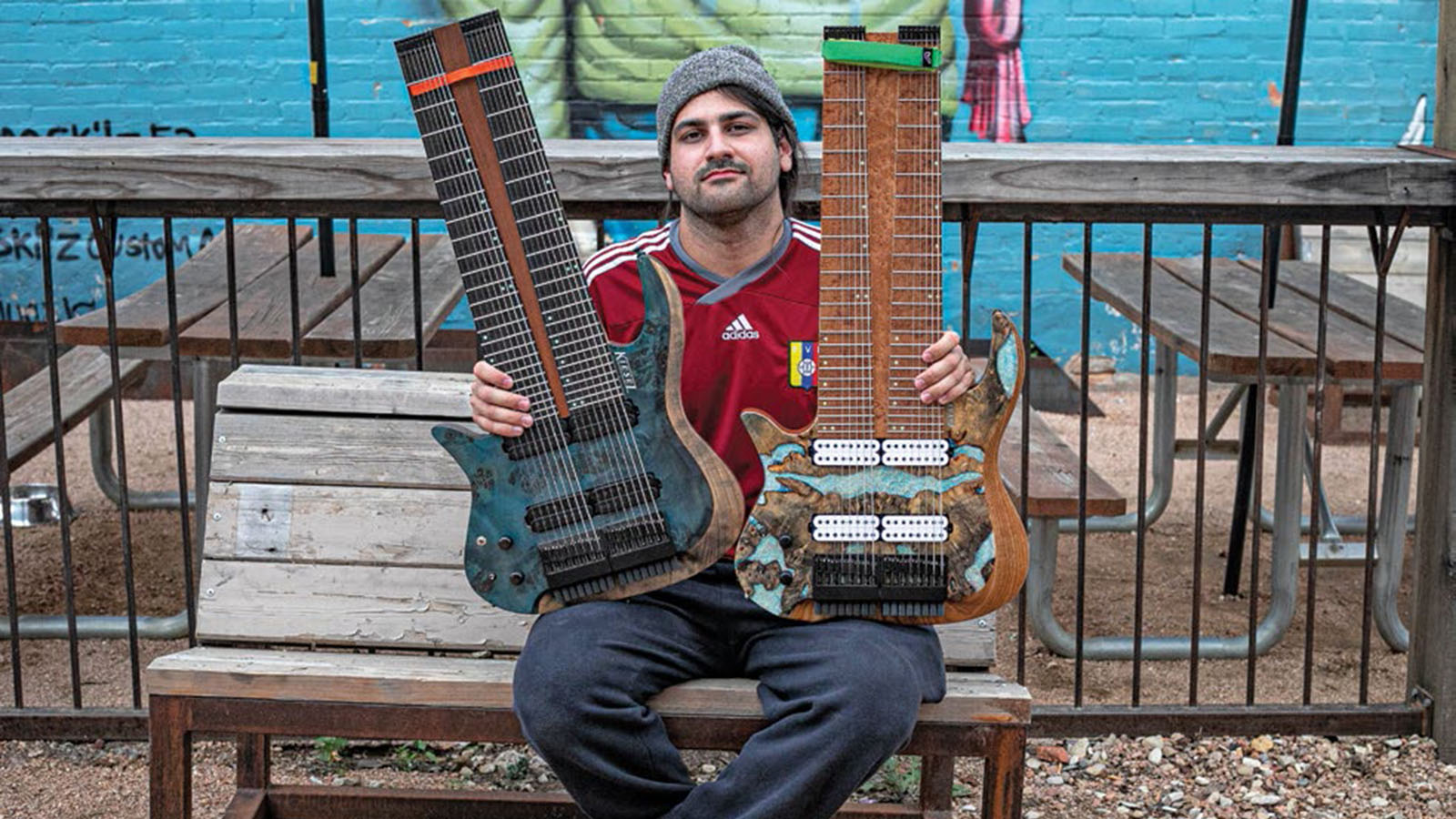
4. Felix Martin, Venezuela
How would you describe your style?
My style of playing consists of playing two guitars as one. Mixing two chords, two melodies, chord-melody and lots of percussion techniques spread on both fretboards.
How did your style develop?
I grew up in a small town in Venezuela, and I learned without the internet, books or teachers. This was a difficult process but at the same time it made me create a few techniques on my own. For some reason, tapping was always easier for me than fingerstyle guitar, so I basically spent all my high school days practicing and developing my tapping technique, which later I applied to two guitars.
What gear do you use to achieve your musical vision?
I use my signature Kiesel guitars. There’s a 16-string guitar (two eight-strings together) and an acoustic 14-string made by Laplante Guitars in Canada. I also use an eight-string Kiesel Zeus. For live shows and recordings I’m using the Line 6 Helix, Ernie Ball strings and several plug-ins and amps.
What’s next?
I’m constantly trying to get better at guitar! Right now I’m just practicing and making arrangements for tapping. I’m always writing new music. I might start touring again in a few months.
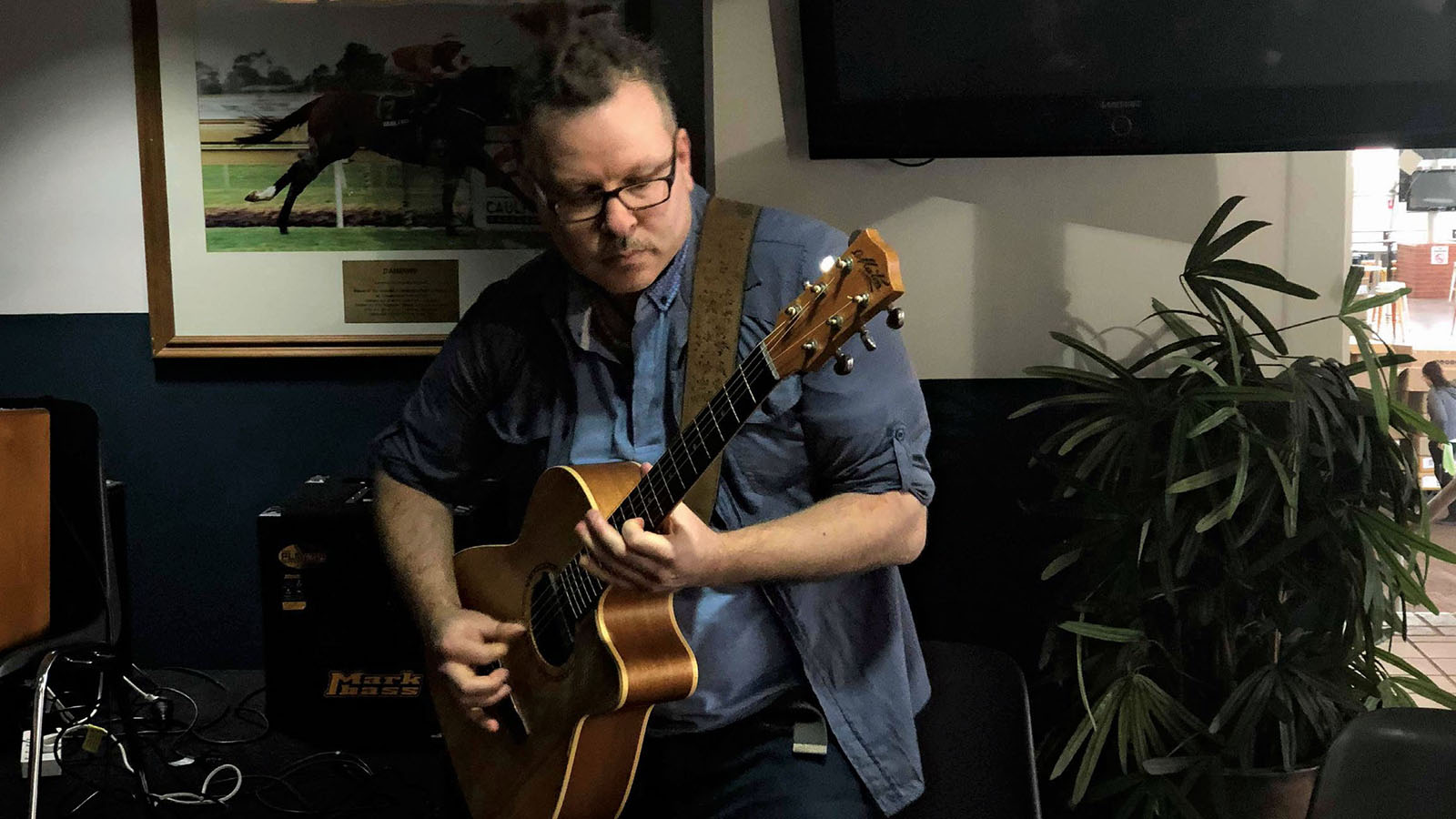
5. Mark Fisher (Phisha), Australia
How would you describe your style?
Melodic acoustic fingerstyle, extended techniques with songwriting, thoughtful lyrics and a vocal connection that makes you feel the story behind it all. A style that needs to be seen, not just heard.
How did your style develop?
Practice. Experimentation. Sourcing inspiration and knowledge from others. I always try to do what is best for the song - which means it’s not about a particular technique, being showy or theory or speed. I reach for being the opposite of all that. I make things as easy for myself as I can, so again, I can focus on delivering music as a story, message or statement. That’s what people remember more.
What gear do you use to achieve your musical vision?
I used to be very simplified in my concept with gear - straight into the PA wherever I went. But this is one area I’m finally growing into. It’s been through learning from others, taking complete ownership and control of your sound and intention. This now requires me taking all PA gear to most shows, but it’s worth it, especially for the requirements I have.
I’m finally travelling with a pedalboard; it’s still very much 'set and forget' but it helps with control of the EQ and reverb. My main guitars live are Maton 808s and a Cole Clark Angel. I also use a Wazinator Stomp for low-end thump.
What’s next?
This year has been deliberately quiet in terms of live shows. My focus has been working with Luke at Tran Aqua Studio to get a new album and EP finished for release in early 2020. I take on all instrumentation myself, so it’s a slow process. But I’ll be getting back to performing it all when I have the new product in hand. My style has developed considerably since my first release in 2012, so I’m really looking forward to having this new stuff out there to show what I do now.
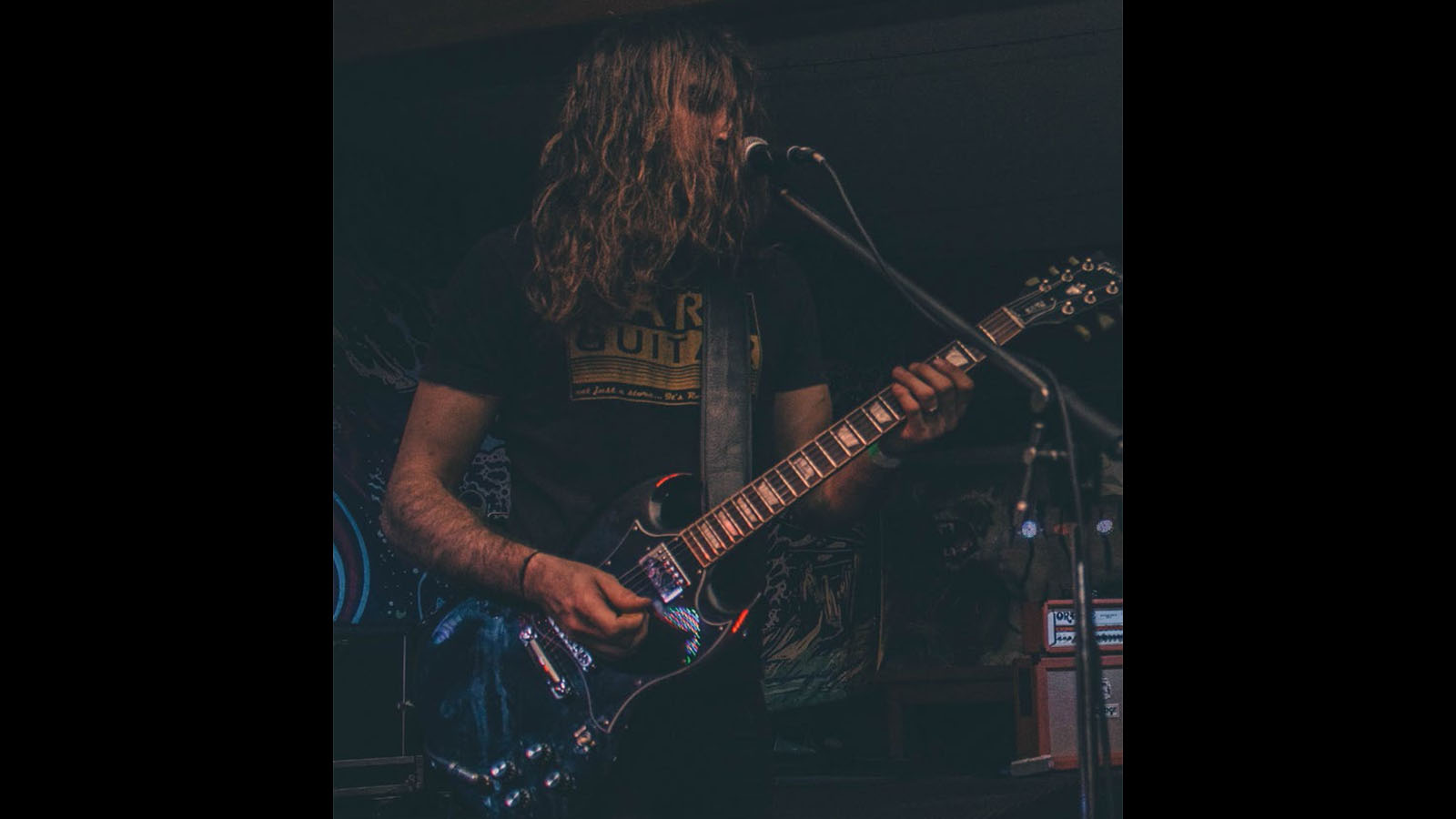
6. Andrew Higgs (King of the North), Australia
How would you describe your style?
For King of the North it’s blues-based riffs and scales, tuned low and played really hard. I was raised in the very healthy Adelaide hard rock and punk scene of the mid to late Nineties. What I took from that schooling was the 'leave it all out on the stage' vibe. So I play with a lot of attack and put everything into a live performance.
I really try to perform the songs, not just play them, and I feel this is reflected in my playing and singing. If I’m not exhausted afterwards, I didn’t do it right. The most unique thing about KOTN is based around how I have to play and arrange songs within the confines of my 3 From 1 guitar pedal. It’s a multi-amp interface that essentially lets me make one guitar sound like lead, rhythm and bass. Using this is an instrument in itself.
How did your style develop?
My style has come from years of playing live in many bands over multiple genres. My pedal came out of a time (2009) where I heard a lot of two-piece bands, and they sounded just as they were - guitar and drums. With the technology of octave, loop and splitter pedals, I wondered, 'Could you do more with this format?' I asked the question, 'Could a two-piece sound like a full band?' After some heavy work internally and externally on a series of pedals, the first 3 From 1 system was created, and to answer my question, “Yes, it can!”
This was used on the first two KOTN recordings and did about 300 live shows over 16 countries. It really was very effective due to being the first of its kind, but tech-wise it was quite primitive. I then moved all the tech into one pedal and the 3 From 1 pedal was born.
This did the last KOTN album (2016) and international tours. A few years on, the pedal is up to mach 3 and better than ever, this time being built by Tone Revival in Melbourne. It has extra functions compared to its predecessor, like phase reversal, transformers, ground lifts, better loop capabilities and easier switching. This lets me be more versatile in the songwriting department, because I have to write and arrange songs based around what the pedal allows me to do live.
There are no prerecords. It’s all live looping and multi-amp switching via three rigs. It’s half mind-bender/half tap-dancer, but once you get used to it, it’s the biggest sound you’ll ever hear coming out of one guitar!
What gear do you use to achieve your musical vision?
I’m using my Gibson Les Paul Standard and SG Anniversary. I use a Schecter Ultra GT for my drop-C stuff and an Indie 335-style semi-hollowbody, which has B-to-B strings on it. Think of it like a set of seven strings and throwing away the top E. Amp-wise, I use my '79 Marshall JMP 50-watt 2x12 combo for the lead amp, an Orange Dual Terror for the rhythm with a Mesa 2x12 cab and Orange Terror Bass for the bass rig with an OBC 4x10 cab.
I use 2x12s because I’m lazy and I can crank the low wattage amps way harder. In Europe I use all Orange stuff. OR’s and Terrors. But to make KOTN work it needs to be three rigs: two guitar rigs and one bass. I always refer to them as Angus, Cliff and Malcolm when explaining the setup to a new sound engineer.
What’s next?
After a two-year break after a car accident, I’m happy to say KOTN are writing and recording as we speak. Our new single, Fires, will hopefully be out in 2019 and is sounding massive, thanks to my new pedal and new drummer Tom Jones. We’ll be releasing a new album in 2020 and touring.
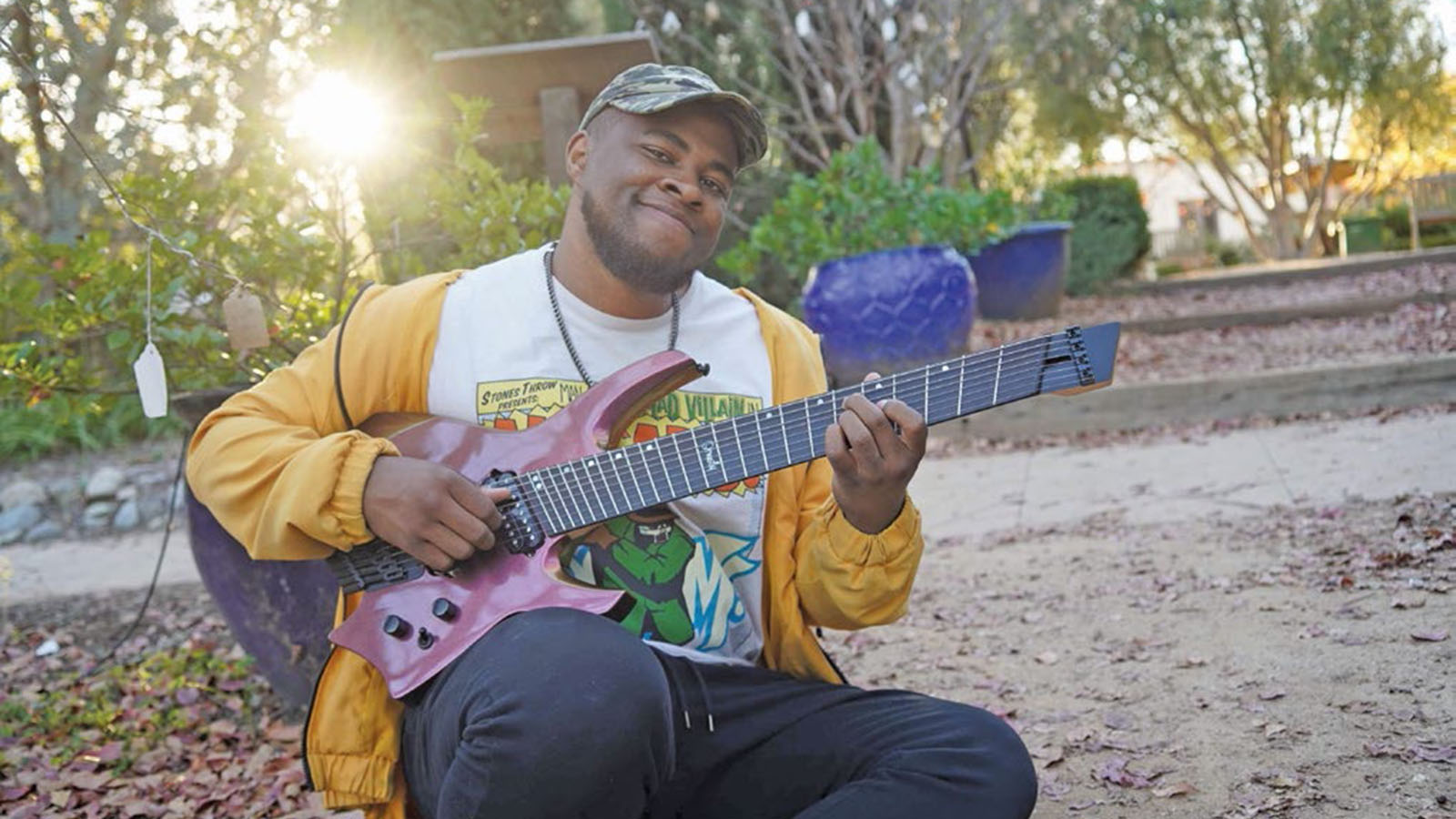
7. Ando San Washington, U.S.
How would you describe your style?
My style is based upon how I produce music. I combine hip-hop beats with progressive guitar elements to create a fresh new sound or genre. I like to call it prog-hop. I also like to incorporate thumping in my writing. A lot of my music is based on thumping, and what makes it unique is how I incorporate thumping with hip-hop beats.
I blend a lot of different chords to create an interesting sequence of melody and harmony. I do a lot of tapping, glitch tapping, hybrid picking and finger picking. So the technique side of my guitar playing and style is very fun and effective when I create new and unique sounds with some of the beats I produce. I want to keep expanding upon this prog-hop idea. I think it’s such a new sound for the guitar world. And I think the guitar has a lot to bring to the hip-hop world!
How did your style develop?
I grew up with hip-hop, but I was a huge metalhead. As I got older I realized my love for both genres should influence my writing. I started blending progressive guitar elements with hip-hop beats just to experiment. It worked so well that I had to expand upon this idea. So I really practiced integrating the two ideas, and what really made it stick out like a sore thumb was when I started adding thumping to the beats.
Adding math-rock elements to my music also helped a lot in terms of my chord ideas and phrasing. The neo-soul vibe is definitely present in my guitar playing as well. More or less, I focused on every aspect of the production of my music. My idea is that everything must have synchronicity. Everything has a place; too much guitar is bad and too much focus on the beats is bad.
What gear do you use to achieve your musical vision?
I’m using a Laney Iron Heart SLS for my studio tone and live tone. It’s a really small compact tube head that has a lot of awesome features like reamping, built-in cabinet impulses, aux cable input, effects loop input - and you also can use the head as a recording interface.
I’m also using a mini Laney STB practice amp and the new Laney Black Country Customs Secret Path reverb, which has three reverbs: plate, spring and the Secret Path mode, which is a dreamy shimmer effect with really cool dark reflection that could literally fill the entire room with feels and vibes.
Guitar-wise, I’m endorsed by Ormsby Guitars so I’m rocking my Ormsby Hype GTR eight-string multiscale Dragonburst and my Ormsby GTR eight-string red/gold chameleon finish. I’m also endorsed by Swiss Picks, so I use the Jason Becker bleu cheese sharp picks and the signature Rusty Cooley model.
What’s next?
I’m working on a third EP called Scheming Season. I released a new single with my buddy, Lenny Pey, called Don’t Bother, a neo-soul-type track that really emphasizes the summer vibes.
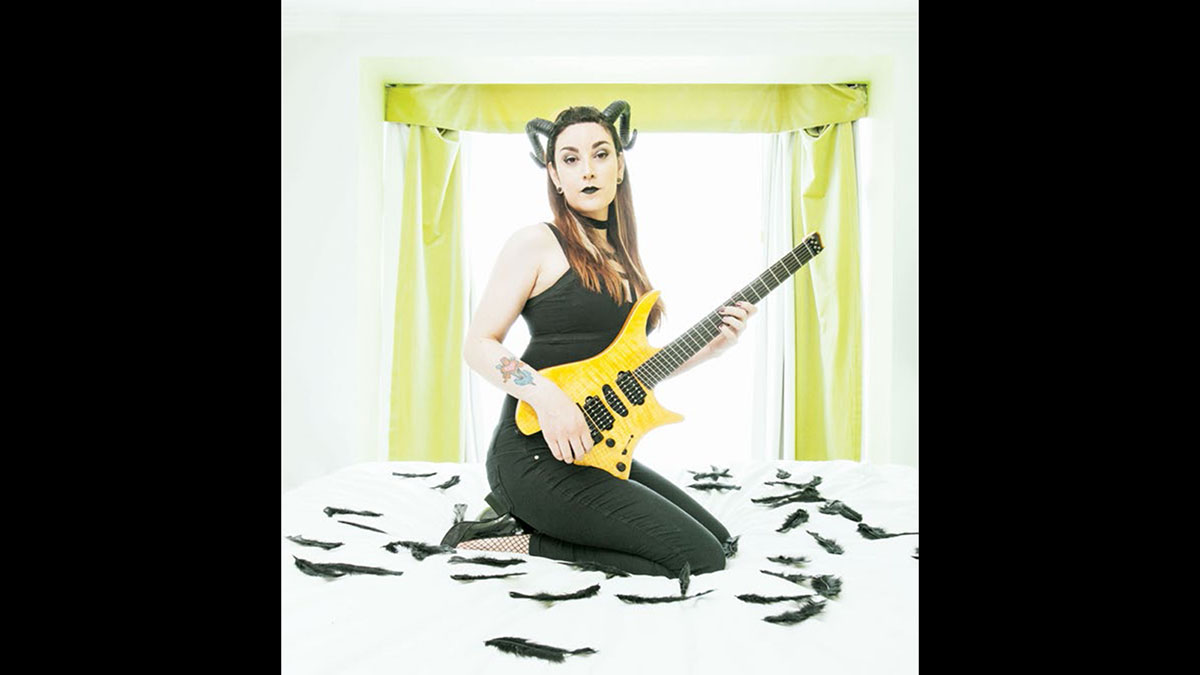
8. Lore Paz Ampuero, Chile
How would you describe your style?
It’s based on two different trends. One refers to the clean sounds, which are inspired by phrases coming from jazz, as chord melodies, but just a little more modern since I use many techniques such as fingerstyle, tapping and thumping. The other is a little more aggressive and more connected to the sounds of metal. I always take into account long intervals too.
How did your style develop?
By carefully listening to a bunch of modern guitarists. I got inspired by José Macario, Felix Martin and Mateus Asato, among others. I always keep in mind that to be active in the music industry, you have to be as innovative and creative as your inspirations are. I think of players like José, Felix and Mateus daily to inspire my own sound.
What gear do you use to achieve your musical vision?
I use Strandberg guitars since I’ve noticed how comfortable I feel playing them. Also, Strandberg supports my work. Another brand I use is Vimana, Chilean guitars that meet the quality standards of international musical instruments.
A long time ago, I decided to stop using amplifiers and enter the digital world. I decided to buy an AxeFx II, which simplified my social media work. Finally, some time ago, I started using guitar plugins when Neural DSP gave me the new Plini plugin as a gift. It was a great present! I use it with an Axe IO interface from IK Multimedia.
What’s next?
I’m organizing a series of collaborations in my social networks with incredible artists! For now, that is my search.
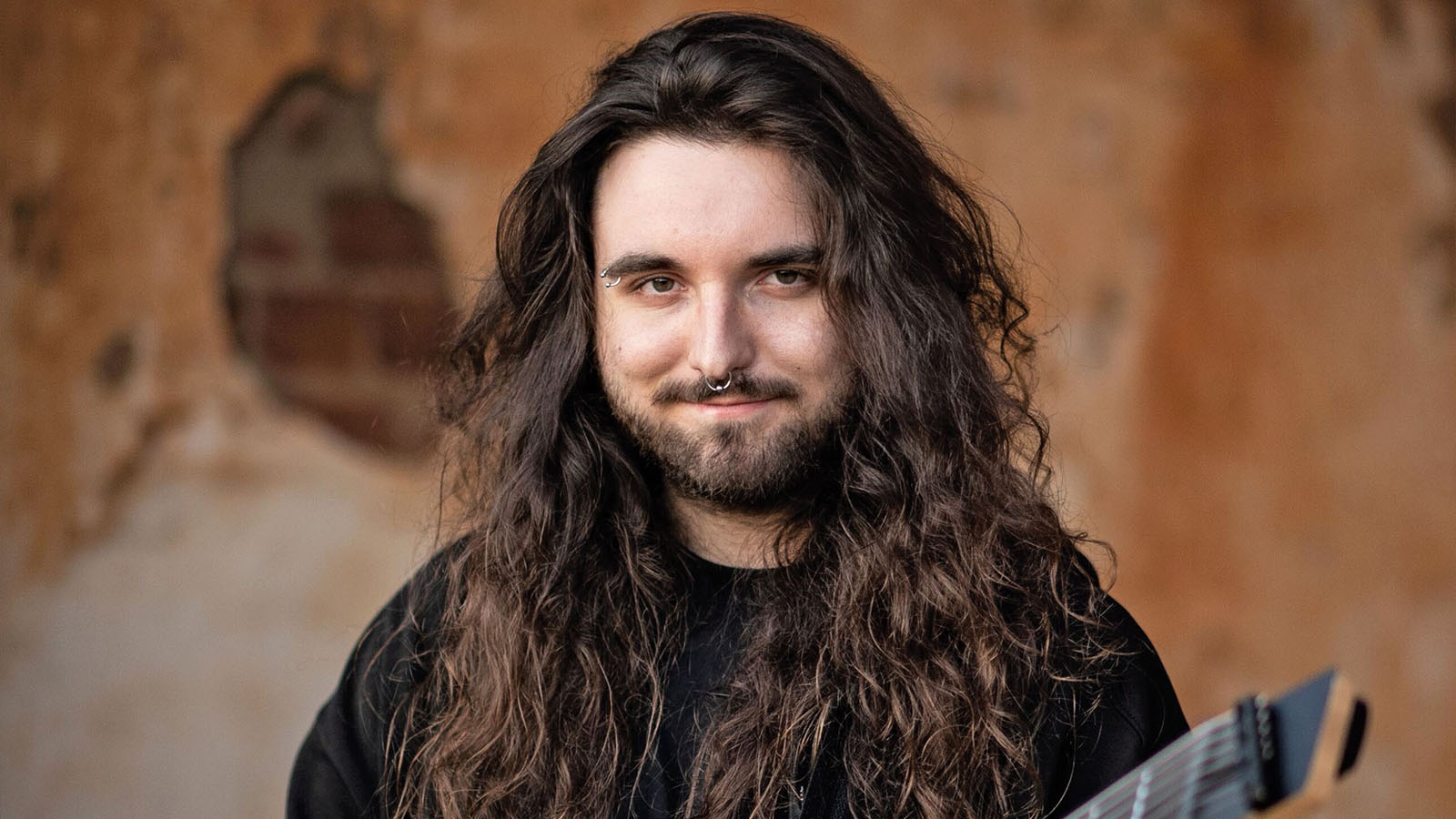
9. Kris Xenopoulos, South Africa
How would you describe your style?
It’s hard to describe my playing because it’s such an amalgamation of everything I’ve ever heard, but maybe imagine a neoclassical jazz-fusion and death metal guitarist that listens to pop and hip-hop. I’m very into modern guitar techniques like multi-finger tapping, thumping, hybrid, sweep and economy picking. I’m also influenced by microtonal genres like Indian classical music.
How did your style develop?
I’ve always tried to take influence from everything I’ve ever heard, whether it be bad or good. The bad helps me discover what I don’t want to sound like, and when you let everything you’ve ever heard influence you - as opposed to a few different bands - you end up sounding more like yourself.
What gear do you use to achieve your musical vision?
I exclusively use Ormsby guitars. I play two Ormsby Copper Top eight-string Goliaths. One is red with a maple fretboard with the Hot Rock pickup in the bridge and De La Creme in the neck, and the other one is blue with an ebony fretboard and with a Nunchucker pickup in the bridge and the De La Creme in the neck. I use a Kemper profiling amp with a Precision Drive from Horizon Devices in front of it, the 1.30 Sharp Cheddar Swiss Pick, and Westone UM20 Pro in-ear monitors.
What’s next?
My band Vulvodynia just released an album called Mob Justice and we just toured the new songs in Europe with Fit for an Autopsy. After that we had the album-release tour in America, which we headlined, and played the Brutal Assault and Party San Open Air festivals in the Czech Republic and Germany.
My comedy death metal band - XavlegbmaofffassssitimiwoamndutroabcwapwaeiippohfffX - has a European headline tour coming up, and Vulvodynia is doing a headline tour through Australia and New Zealand before hitting the road with Archspire, Beneath the Massacre and Inferi for Archspire’s Tech Trek tour.
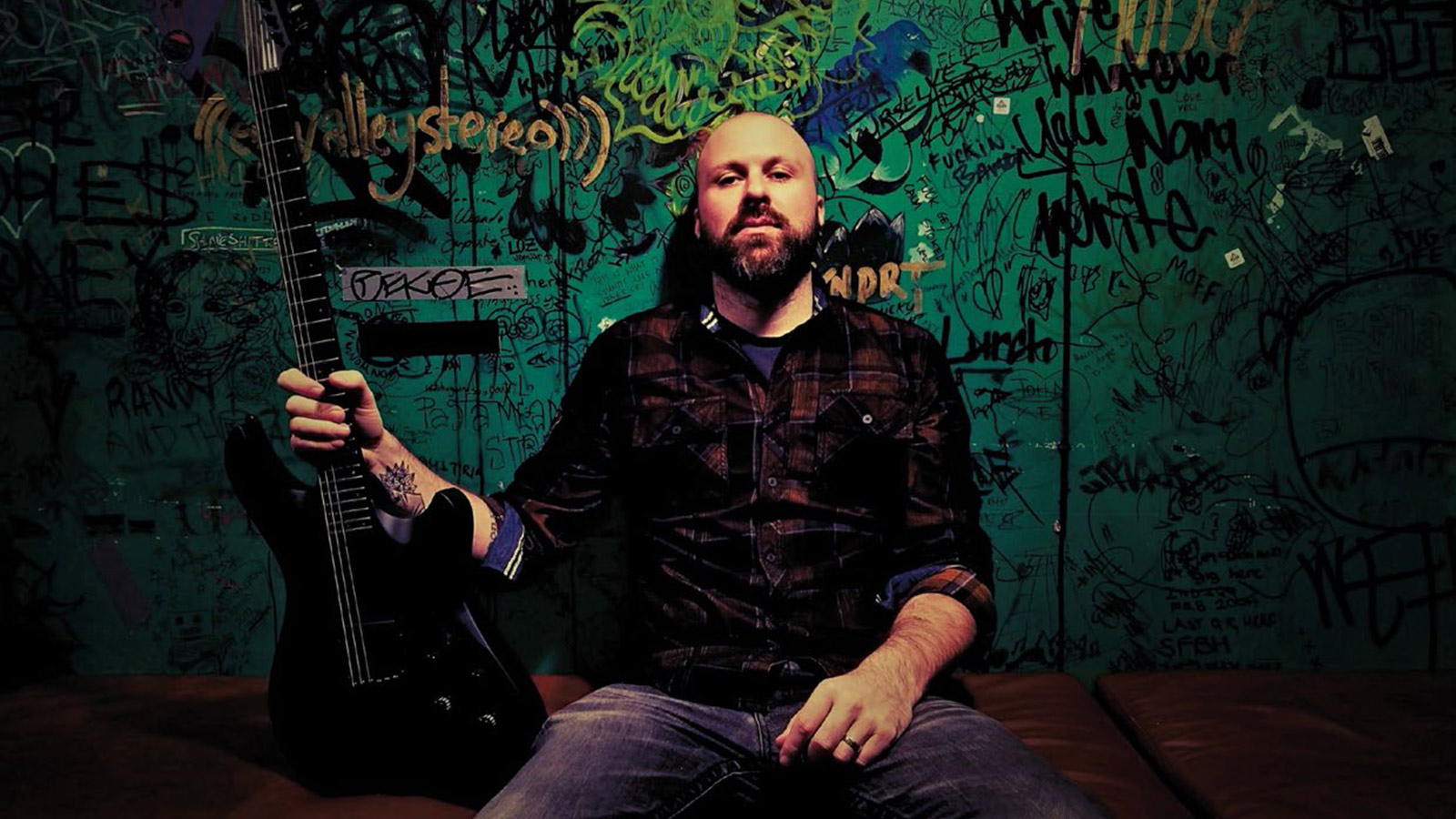
10. Stevic Mackay (Twelve Foot Ninja), Australia
How would you describe your style?
Whatever-I-want-core? A deformed mutant constructed from the DNA scrapings of multiple, much better guitar players. Relegated to perpetually float in an underground formaldehyde tank in the dark; escape was only possible through an oversight in the tank’s engineering; concentrated piss taking can erode the structural integrity of mutant formaldehyde tanks.
My style escaped and aimlessly wandered the night like a drunken windmill. It eventually befriended a wise pigeon who took my style under its wing. Many years later on its death bed, the pigeon told its greatest student (my style) that pigeons don’t actually like pigeon holes… They just go in there to shit and then go somewhere else.
From that day on, my style didn’t consider pigeon holes to have any significance. So I guess my style is "escaped mutant trained by an unconventional pigeon” style.
How did your style develop?
Once I realized guitar is just a means to interpret music, I let go of anything that didn’t serve the music.
What gear do you use to achieve your musical vision?
My entire rig is a Shuriken Variax - which I designed - and a Line 6 Helix Rack. I use this gear because it allows me to do things that would be impossible otherwise. I’m not one to collect guitars or gear. I only have what I need. I have only one cordless drill also.
What’s next?
I’m in lockdown working on Twelve Foot Ninja’s third album.
Peter Hodgson is a journalist, an award-winning shredder, an instructional columnist, a guitar teacher, a guitar repair guy, a dad and an extremely amateur barista. He runs a blog, I Heart Guitar, which allows him to publicly geek out over his obsessions. Peter is from Melbourne, Australia, where he writes for various magazines, including Guitar World.
